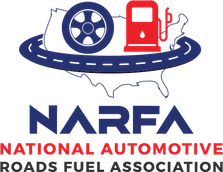Applicable large employers must adhere to many Affordable Care Act (ACA) rules to maintain compliance regarding group health plan offerings. We offer the following checklist of the five most helpful reminders you should take into account as you plan for 2023.
1. Adjust to a Lower Affordability Threshold
The ACA imposes an employer shared responsibility payment (ESRP) on any applicable large employer (ALE) who offers qualifying coverage to its full-time employees but for which the employee share of the cost for the lowest tier self-only coverage option is deemed unaffordable. The ACA bases affordability on an employee’s household income and indexes the percentage annually for inflation.
For 2023, the affordability threshold is 9.12% – down from 9.61% in 2022. ALEs preparing for 2023 should be aware that this change will affect how much you can charge employees for health coverage and still avoid an ESRP.
2. Be Aware of the Affordability Safe Harbors
An ALE typically does not know an employee’s overall household income, so federal regulators created three safe harbors you may use to judge whether an offer of coverage is affordable:
-
- W-2 Safe Harbor is based on the wages an employer reports in Box 1 of an employee’s Form W-2.
- Rate of Pay Safe Harbor is based on an employee’s rate of pay at the beginning of the coverage period, with adjustments permitted for an hourly employee only if the rate of pay is decreased during the period.
- Federal Poverty Line Safe Harbor deems coverage affordable if the required monthly contribution does not exceed 9.5% (adjusted annually) of the federal poverty line (FPL) for a single individual for the applicable calendar year, divided by 12. Note that the government typically releases the FPL table after the calendar year starts. So, employer plan sponsors (including any who sponsor a calendar year plan) may use the FPL table published within the six months prior to the start of the plan year. For example, the maximum employee contribution for lowest tier self-only coverage for ALEs with calendar year plans, will be $103.28.
3. Recognize That ESRP Penalty Amounts Continue to Rise
The IRS annually updates the inflation-adjusted amounts that it will assess against any ALE that either fails to make an offer of group health coverage to at least 95% of its full-time employees (the so-called “A” penalty) or makes an offer of coverage that is either unaffordable or does not meet the ACA’s minimum value standard (the so-called “B” penalty).
For 2023, the A penalty is $2,880 ($240/month), and the B penalty is $4,320 ($360/month). The rising cost of noncompliance should serve as a further incentive for employers to examine your group health plan offerings to ensure broad enough coverage to full-time employees with at least one self-only option that is affordable and provides minimum value benefits.
4. Calendar the Form 1094-C/1095-C Deadlines
ALEs must annually issue individual statements (generally copies of Form 1095-C) and file Forms 1094-C and 1095-C with IRS to disclose certain information about the group health coverage they offer their full-time employees.
- For the 2022 reporting cycle, ALEs must furnish individual statements to full-time employees by no later than March 2, 2023.
- ALEs must file applicable reports with IRS by no later than February 28, 2023, if filing by paper, or by no later than March 31, 2023 if filing electronically (which is mandatory for ALEs filing more than 250 forms).
5. Use Current Draft ACA Reporting Forms
IRS recently issued draft versions of Forms 1094-B and 1095-B and Forms 1094-C and 1095-C for employers to report offers of coverage for 2022. Self-funded plan sponsors who are not applicable large employers (ALEs) will use Forms 1094-B and 1095-B; ALEs will use Forms 1094-C and 1095-C. The draft forms contain no material additions this year, but the instructions have eliminated references to individual mandate penalties.
Employers, particularly those for who this is the first reporting cycle, should review the 2022 draft forms. The IRS continues to be less lenient with basic reporting errors, so it will be important for employers to fully understand their ACA reporting obligations. Confusion regarding the forms could cause costly reporting errors.
Conclusion
The NARFA Benefit Center and Team continues to watch regulatory and labor news as it comes and will always update you on the latest developments. Our team stands ready to assist you with any compliance questions you might have.
Recent Posts
Why Your Small Business Might Be Over-Insuring—and What You Can Do About It
The Healthcare Crisis in Massachusetts Small businesses in Massachusetts are grappling with a healthcare system in turmoil. Layoffs, carrier losses, soaring drug costs, and limited [...]
The Importance of Chronic Disease Management in Workers’ Compensation and Workplace Safety
Chronic diseases are becoming a major issue in the workplace, making up a large share of workers' compensation claims in Massachusetts. Conditions such as diabetes, [...]
Understanding Community Rating in Health Insurance: What It Means for Your Business
Healthcare costs in New England are among the highest in the country, putting significant pressure on businesses, and in many cases are surpassing national averages. [...]




